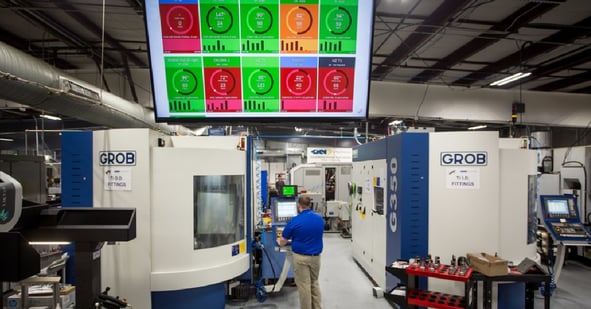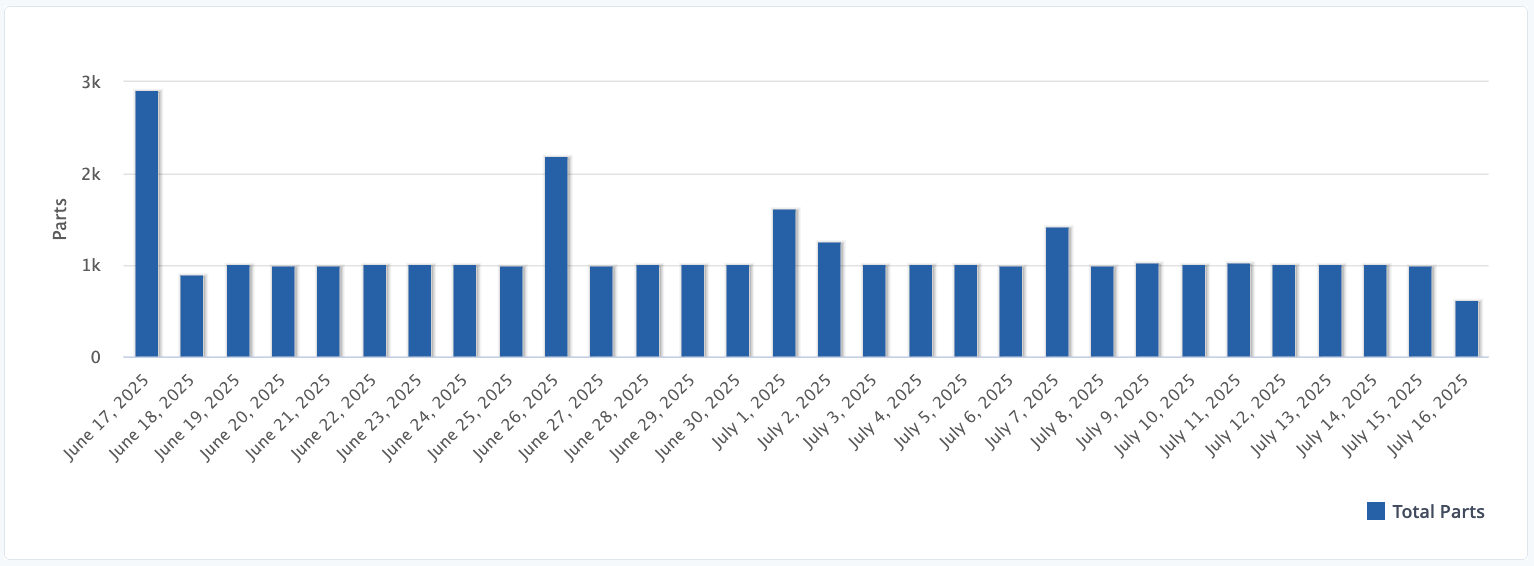Manufacturing, regardless of what tools, bits or parts the machines are producing, tends to follow decade old processes. There is an element of the 'this is how we’ve always done it and it’s worked fine up to now’ mentality that needs to change. After all, manufacturing is a competitive industry within our world economy, and companies that don’t grow will run into difficulties.
Those manufacturers that have embraced less manual processes for gathering data and monitoring processes are good at just that: gathering and monitoring. But there is so much operational information that can be gleaned from thorough in depth analysis of the data. This information can help you alter processes, save time and money and in the end, help your company stay on top.
A great example of this is Intel. They used to perform over 19,000 quality assurance tests on every single chip that they produced, but by leveraging data and analyzing it at a micro level, they were able to eliminate many tests for individual chip sub-types and focus in only on tests that were likely to reveal any issues, based on historical data. The cost savings in terms of shortened testing processes and faster time to market have been enormous!
Improvements to date in manufacturing
In the last decade, manufacturers have been moving towards the concept of refining their processes, making them leaner, to ensure a reduction in waste and improvement in quality. In other words, we have seen an uptick in the overall yield from the factory floor. But many manufacturers are dealing with complex products, changes to the marketplace, variability in resources, and all of these ‘fast’ changes require looking at data in a far deeper way. In particular, these five process areas have the highest impact on yield:
- Supply Chain- tracking and forecasting inventory, supply needs and output
- Demand needs- previously based on human estimates, data can now forecast these numbers from masses of historical data
- Maintenance- data gathered from machines directly, compared to past performance helps deal with any and all processes around maintenance and planned downtime
- Production- verifying production and quality standards against industry and internal benchmarks, on a continual basis
- Quality- checking the quality of the output is essential to the growth of any manufacturer
The key to all of these processes being analyzed and improved is advanced analytics.
What are advanced analytics?
Advanced analytics refers to looking at production data through the lens of a variety of equations and statistics. The results allow a company’s decision makers to get a true sense of current processes and discover ways to improve them. For manufacturers, that can involve looking at production data at a very basic level in order to get a handle on historical patterns. In doing so, a manager could see the interrelationships from step to step in the manufacturing process and identify areas where there could be improvements in quality, yield and waste.
What are the steps to improve processes through analytics?
The first step is to figure out what you are measuring with your analytics and against which standards. It’s not always obvious where the issues are coming from. A good place to start is to make sure that you have Key Performance Indicators (KPIs) identified. Depending on what process you are analyzing, those could vary quite a bit. You could be measuring against OEE (Overall Equipment Effectiveness) standards, other industry benchmarks, or internal numbers. Basically though, you need to examine data within a very narrow section at a time in order to get the patterns and information out of the data that will help you to improve the overall production processes.
The next step is to centralize that data from all the various machines and other sources, including human input, so that it is all in one place and possibly unknown process correlations can be identified.
 Then you need to take the data and look for patterns and correlations, relative to averages or another baseline, such as an industry standard:
Then you need to take the data and look for patterns and correlations, relative to averages or another baseline, such as an industry standard:
- What historical patterns are emerging?
- What step is dependent on another step in the process?
- What are the average results in any given process? How far are your process results from a perfect’ standard?
- Do these results fluctuate based on any known input?
- How can improvements be made to these processes? Drilling down on parts of the process to find any bottlenecks or inefficiencies can alert you to simple process improvements that you weren’t aware could be made.
Finding the root cause of any inefficiency is essential to figuring out how you’re going to change the process to fix it.
Finally, when you have found the cause of any issues or inefficiencies in your production processes, you can put fixes in place, allow them to work for a period of time and then measure again, against your new and expected standard, to see if the changes have been effective. This is exactly how you move towards being a data driven manufacturer.
Set a new standard
By analyzing data and finding ways to improve processes, you are also setting new standards of operation. You can then automate the acceptable levels of deviation at any step in your process so that anything in excess of those levels will be flagged immediately, reducing waste and downtime.
Automate processes that can be automated
Invariably, two big effects on processes are manual steps and human error. By automating processes that were previously manual, you can save a lot of time and avoid errors. In order to automate your processes though, you need data to ensure that you are in fact implementing automations that will enhance the processes, rather than make things more complex or difficult on the shop floor.
As you can see, data is the key to optimizing all processes, from supply management to quality assurance. Ultimately, profit margins aren’t going to get bigger so getting a better yield from every input is the best way to remain competitive and on target.
Looking for the right analytics platform?
Contact MachineMetrics to learn more


.png?width=1960&height=1300&name=01_comp_Downtime-%26-Quality_laptop%20(1).png)
 Then you need to take the data and look for patterns and correlations, relative to averages or another baseline, such as an industry standard:
Then you need to take the data and look for patterns and correlations, relative to averages or another baseline, such as an industry standard:









Comments